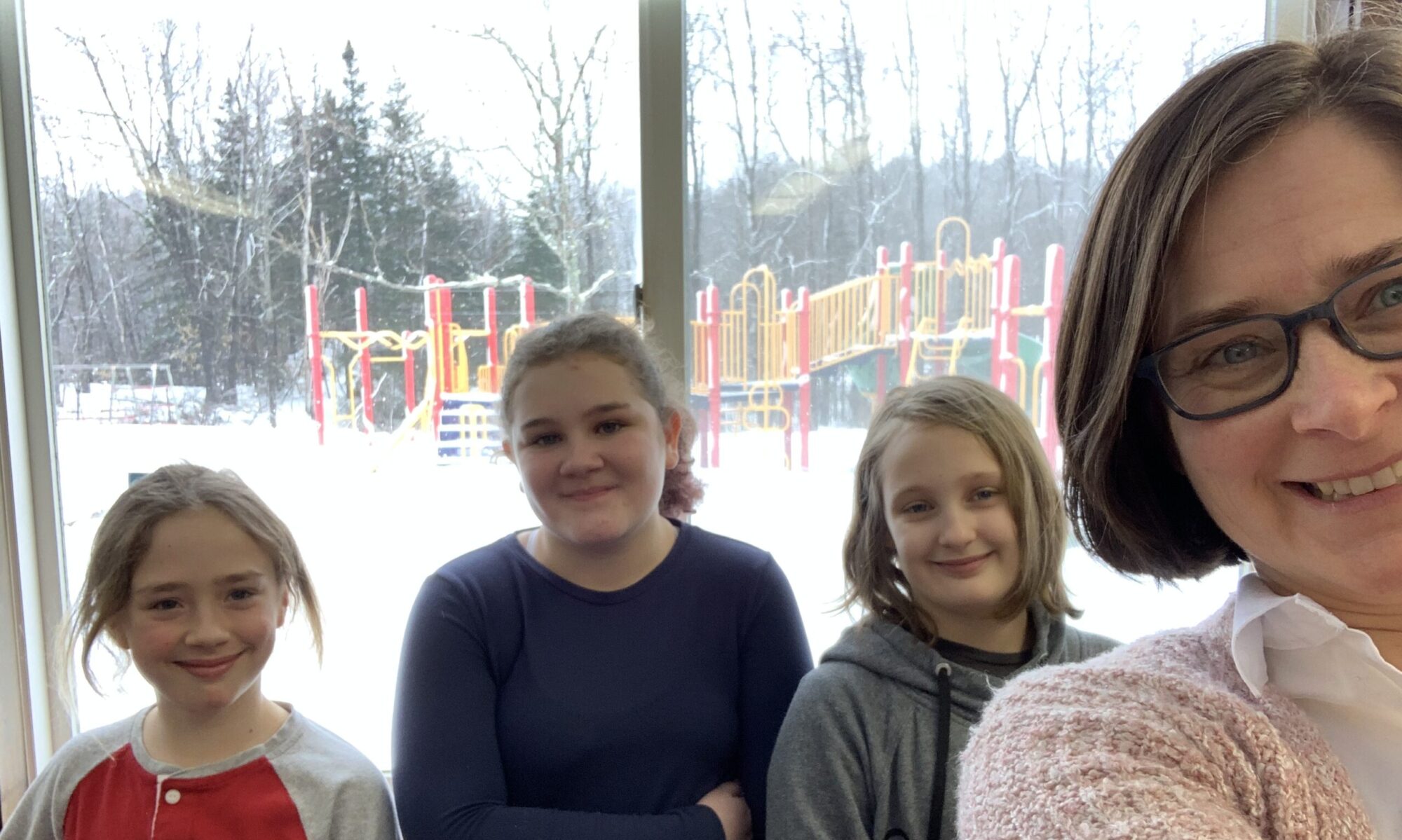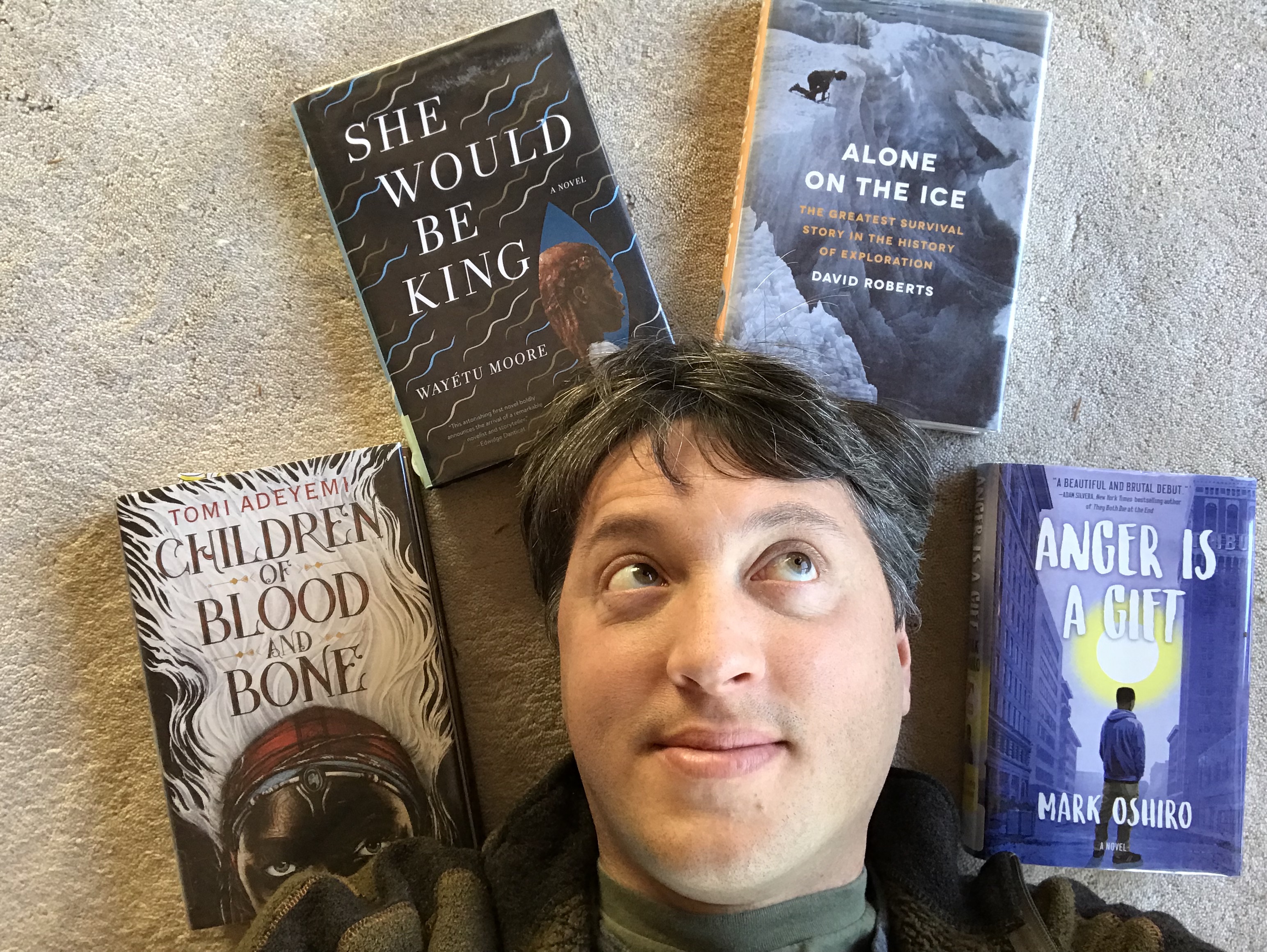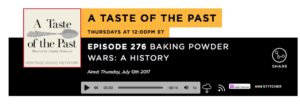One of the best things about winter break is the chance to slow down and, for readers, the chance to take a break from the madcap holiday festivities and curl up in the corner with a good book.
Here’s what the TIIE staff are reading this 2018 holiday season.
Audrey
While I usually go for holiday murder mysteries — Stuart MacBride’s 12 Days of Winter, The Adventure of the Christmas Pudding, and the BBC Radio adaptation of The Sittaford Mystery are perennial favorites — this year I decided to go for something different.
I’m feasting on a veritable cornucopia of cookbooks and books on culinary history, and that’s the last food-related pun I’ll make in this entry as I Have Been Warned About That Sort Of Thing.
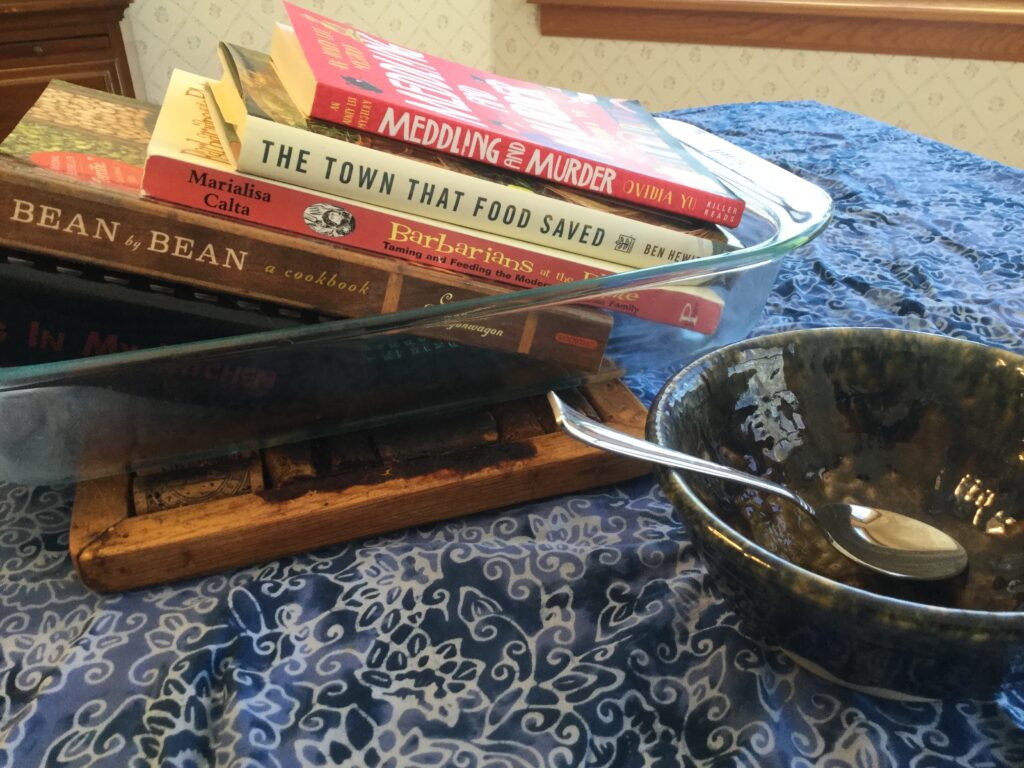
A good number of Vermont authors have brought out some great reading and eating books, including, in no particular order:
Bean by Bean: A Cookbook, by Westminster VT-based author Crescent Dragonwagon. A new find for me (shout out to the Lawrence Memorial Library in Bristol), I’ve already made a half-dozen of the dishes she features, including Orange Blossom Special Baked Beans, Ful Medames (mashed fava beans cooked with garlic and cumin, garnished with hard-boiled eggs and fresh tomato), Kerala-style Dal (coconutty!), Thai-style carrot and green bean salad (zesty!) and Chopped Liver à La Dragon (vegan & gluten-free chopped liver, which you will not knock until you’ve tried). Still working up to the bean-based desserts chapter.
Marialisa Calta’s Barbarians at the Plate: Taming and Feeding the Modern American Family. This Calais, VT-based author traveled around the country interviewing families and getting them to share their strategies for getting dinner on the table. Along with Calta’s own tips for feeding a horde in 60 minutes or whatever you can eke out of an evening, this book arrived in my house via one of Hinesburg’s Tiny Free Libraries and features the best black bean soup ever.
The Town That Food Saved: How One Community Found Vitality in Local Food, by Ben Hewitt. Less of a cookbook and more of a look at community-based food production, Hewitt examines the revitalization of Hardwick, VT and surrounding communities. Around 10 years ago, organic farmers, CSAs, seed producers and dairies began deliberately moving their businesses to Hardwick, joining a deep agricultural tradition in the region and changing the small local economy …in surprising ways. I found this book earlier this year, digging deep in the stacks of the Russell Memorial Library in Monkton, and have been meaning to give it a re-read.
Okay, this is just an out-and-out cookbook: There’s A Pug In My Kitchen: Favorite Recipes from Friends of Green Mountain Pug Rescue. Spoiler: contains no actual pugs (although the dog biscuit recipe is worthy). This fat little cookbook never fails to surprise, with notes from the recipe’s submitters. Whether it’s Kale & Sundried Tomato Spoon bread, from Jeanne Finton, in Panton VT, Gayle Lyman’s Stuffed Mushrooms or Squash Soup with Goat Cheese & Chives, from Burlington’s Tamara Durfee-Smith, I always manage to find something new to try.
Baking Powder Wars: The Cutthroat Food Fight That Revolutionized Cooking, by Linda Civitello, has nothing to do with Vermont. 19th century industrial espionage! Robber barons! Possible poisonings!
Y’all, this is all Linda Pelaccio’s fault. I’m a huge fan of her podcast, A Taste of the Past, which is all culinary history, all the time, and Civitello’s episode is one of my favorites.
Finally, a little farther afield entirely (and possibly returning to the main holiday theme), I’m excited to curl up with the newest Ovidia Yu mystery, Meddling and Murder. Set in Singapore, this series tells the story of a meddling Peranakan auntie who runs a café and catering business, and includes lavish descriptions of the all the meals she prepares. Be warned: you will want nasi lemak after you finish reading.
Jeanie
I’ve read some wonderful books in 2018, and I’m looking forward to another year of great reading. I just finished listening to the audiobook Becoming by Michelle Obama. Her heartfelt memoir is a deeply reflective look at her life from a girl in the South Side of Chicago to the First Lady of the United States. I really appreciated her vulnerability and honesty, and loved listening to her read her own words. I’m looking forward to spending time with a print copy so I can reread my favorite sections and peruse the photographs that accompany her story. I’m also inspired to read more memoirs, and Jarrett J. Krosoczka’s Hey, Kiddo is at the top of my list. Krosoczka is the well known author/illustrator of the Lunch Lady books for younger readers, but his graphic memoir is for young adults. In it he tells the story of being raised by his grandparents as his mother struggles with heroin addiction and his father is absent.
My favorite novel from 2018 was There There by Tommy Orange, a member of the Cheyenne and Arapaho Tribes of Oklahoma. It is a brilliant but heartbreaking story told in many voices, all urban and Native American. It has me craving more stories by and about native people. Cherie Dimaline’s dystopic novel The Marrow Thieves fits the bill. In it only Indigenous North Americans can dream, making their bodies extremely valuable to poachers who want to use their marrow to find a cure for non-dreamers. Sounds creepy but compelling!
Troublemakers: Lessons in Freedom from Young Children at School is absolutely my favorite education book of 2018, and I recommend it to every educator I know. Carla Shalaby’s case studies of four non-compliant students have much to teach us about building an education system where all students can learn.
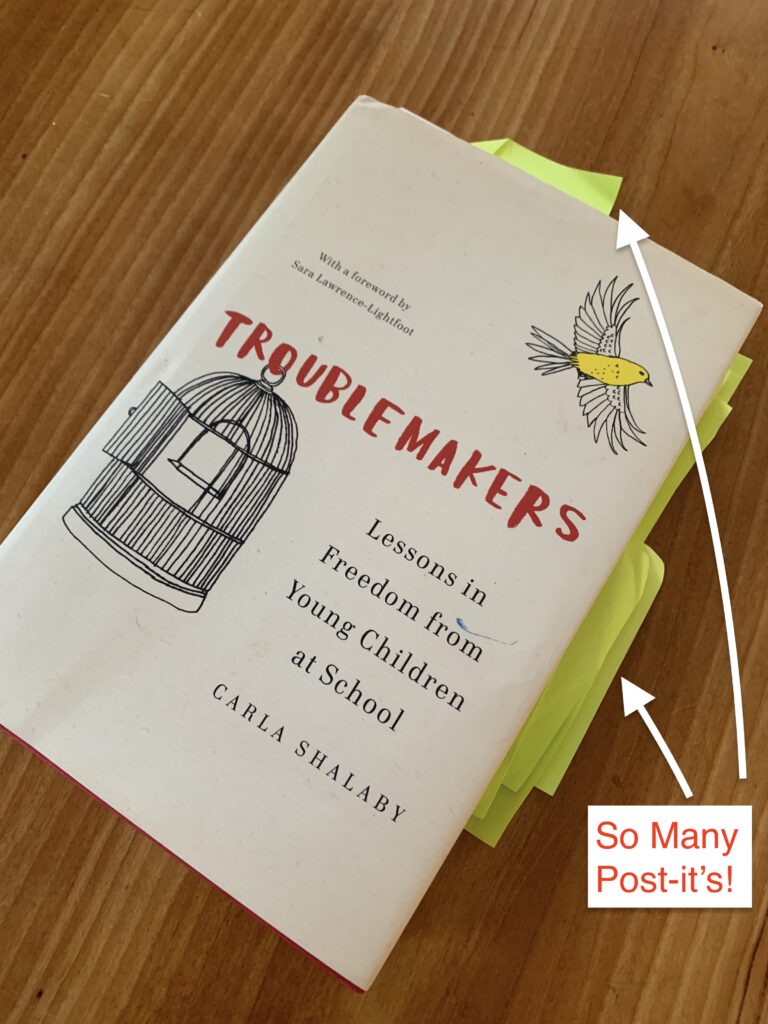
On my list for this coming year: Schooltalk: Rethinking What We Say About -and To- Students Every Day Mica Pollock approaches equitable education from a very concrete place: the words we use. Words have power, and I’m looking forward to examining my own so they can be tools for equity.
Happy Reading!
Katy
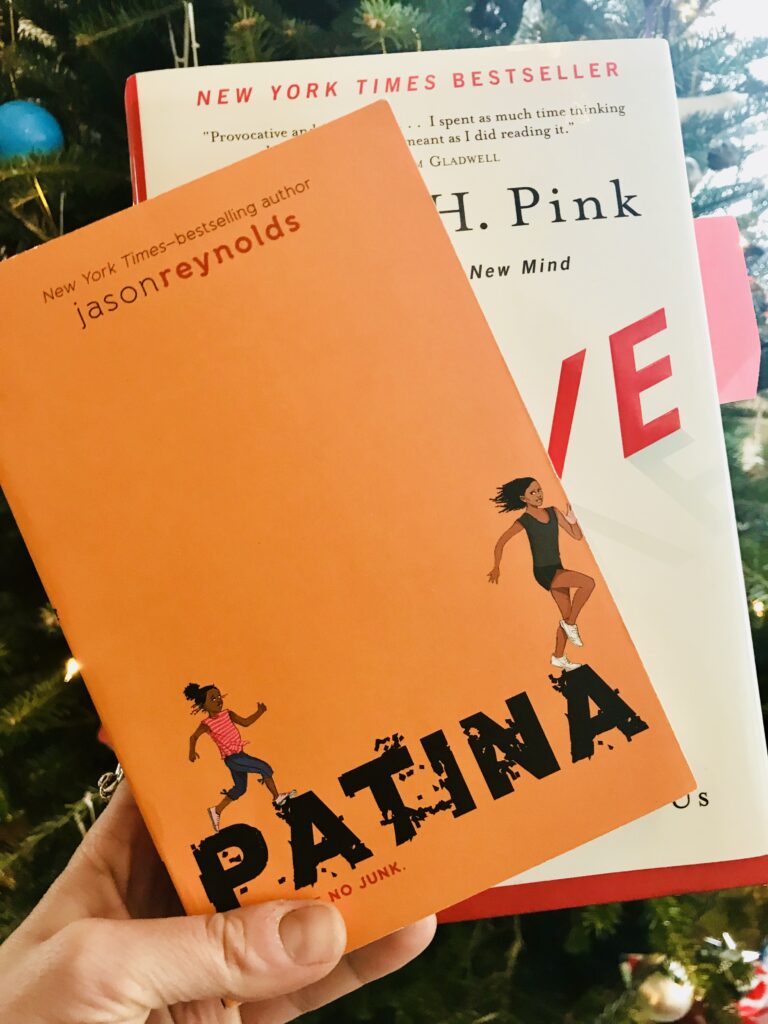
Winter is the best time for reading, all that darkness. I was lucky to find a sale priced copy of Daniel Pink’s by DRIVE: the surprising truth about what motivates us. This is a general population/business oriented is book packed with research about what motivates humans with many implications for our work in education. Hundreds of research papers and studies essentially point to the same thing:
“Human beings have an innate drive to be autonomous, self-determined, and connected to one another. And when that drive is liberated, people achieve more and live richer lives.”
Self-determination theory, as described by researchers Deci and Ryan, could then be considered as motivation (see what I did there?) and justification for many personalization pedagogies, especially service learning and project based learning. Another salient point from the first part of the book, based on extensive research, is that extrinsic rewards for behavior do not work for the long term in most cases. Indeed, students are often diligent about the change in the short term, but lose interest in the long term with extrinsic rewards for certain behaviors. Working to improve opportunities to develop intrinsic motivation fosters life-long learning and opportunity for students, and this is rooted in research.
I also just finished reading aloud Patina by Jason Reynolds to my daughters. We fell hard and fast for the protagonist, Patty, who faces many challenges in her family and in moving schools. She is a track athlete, so fellow runners (raising hand) will love the scenes about racing and relay passes. But really, the book is about all the different ways families can look and be, and how we can face hard things with love and support from friends and how ever we define family. The characters are finely drawn (especially Patina’s younger sister, Maddy) and the book is laugh out loud funny at times too. This is part of a track series (YES!) of books that include Ghost, Patina, Sunny, and Lu, which are now on our to read list.
Life
I love my local Waterbury Public Library. I especially enjoy perusing the new release section and finding a gem like She Would be King, a debut novel from Wayetu Moore. Based on the first few pages, her writing is poetic and enthralling. She blends history and magical realism to retell the founding of Liberia. I plan to cuddle up with this one when I want to revel in the enchantment of the season.
I got a bit overambitious with interlibrary loan and ended up with a bunch of other books that have been on my list. Alone on the Ice details an Antarctic expedition from 100 years ago. I was inspired to read it because my wife is obsessed with the daily progress reports of Colin O’Brady, who is one of two adventurers separately attempting the first solo unassisted traverse of Antarctica at the moment. Fittingly, I will read this when I need alone time.
It took me a while to get my hands on the instant classic Children of Blood and Bone by Tomi Adeyemi. I will read this one when my wife is done with it. She got to it first and it must be good because she shows no signs of sharing until she’s finished.
I have no idea where I heard about Anger is a Gift, a YA novel by Mark Oshiro. But whoever put this on my list, thank you. So far it has been an emotional and rewarding ride. The characters are incredibly diverse along every dimension. The school that is central to the story exhibits both oppressive systems and liberation possibilities (via amazing educators, of course). I am reading this one every free moment until I’m finished. And like in the real world, I’m hopeful that liberation wins out.
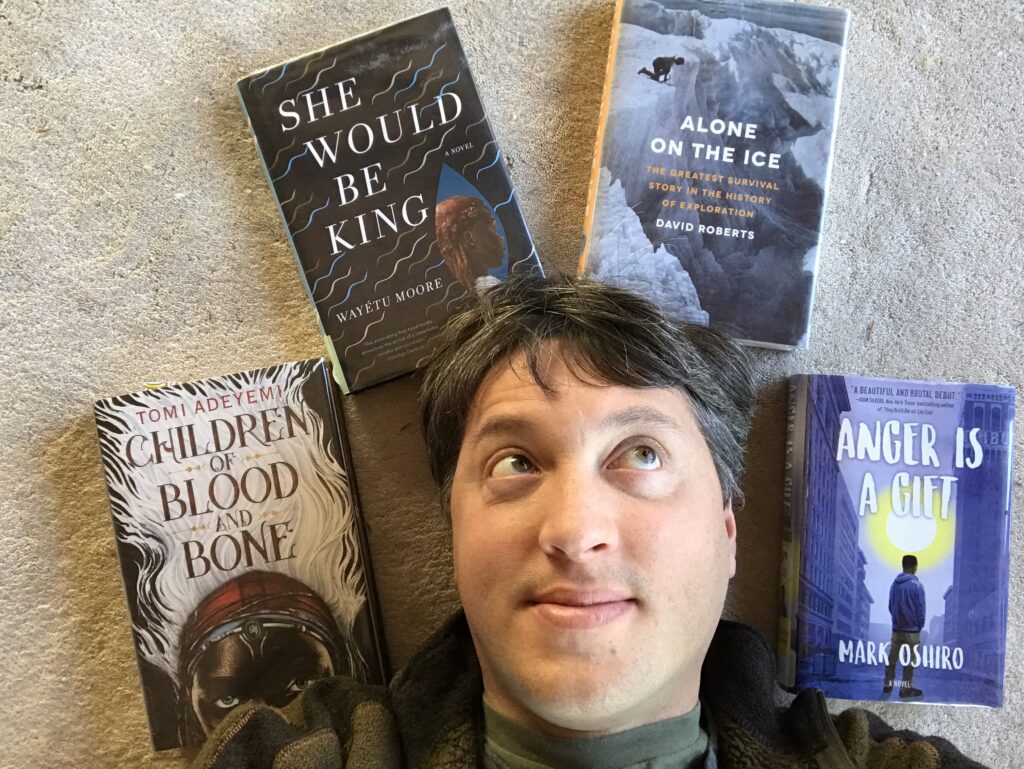
Scott
Several years ago, while camping with my family, I stumbled upon a totally random stack of books previous campers had left in a cabin. A few miles from nowhere, and without any cell phone reception, a book seems like the perfect fit. Not knowing anything about the books in the pile I closed my eyes and grabbed one at random. Little did I know this would be the beginning of a serious binge with this series. Every time I read a book in this series it takes me back to the peace and tranquility of the woods and that lakeside hammock I called home for a few days. Two weeks ago, Past Tense, the most recent book in Lee’ Child’s series appeared on my kitchen island. It was a birthday gift to my wife from her father.
Full admission, I straight up stole it and claimed possession is nine tenths of the law.
Apologies to my wife… The series details the life of an ex-Army police officer that finds himself in these crazy mystery situations and end up solving them one way or another.
There was a decade in my life I only lived for the nonfiction genre of adventure and exploration. I was fascinated with books like Into Thin Air, Seven Summits, The Climb, and Above the Clouds to name a few. With every book, I was swept into a foreign and challenging landscape where people pushed their bodies beyond what they and science thought was possible. It was this battle with pushing boundaries and often an exploration of one’s self that kept me hooked. I recently watched the documentary Free Solo where Alex Honnold free climbed (no ropes or safety gear) Yosemite’s El Capitan. I was reminded of a similar challenge in Heinrich Harrer’s The White Spider. The book details the successful 1938 climb of the Eiger located in the Alps of Switzerland. It’s worth a re-read.
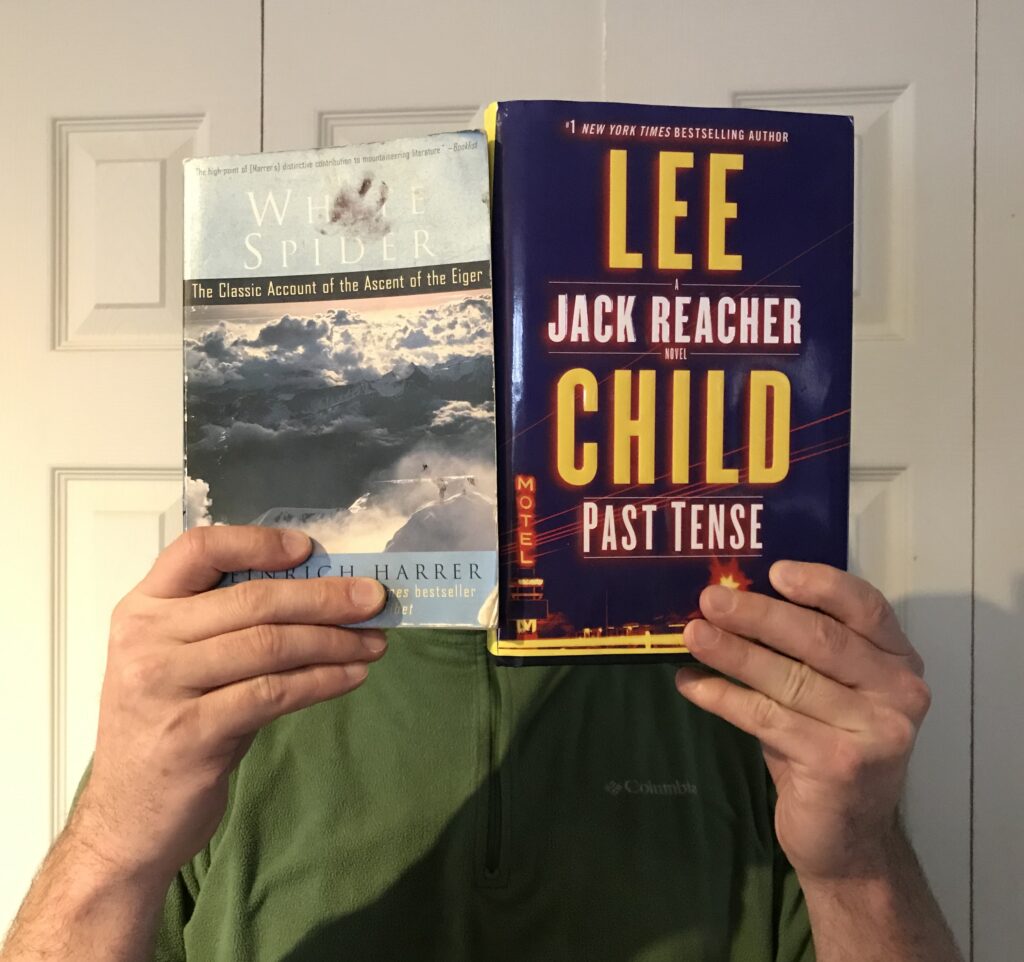
Susan
I’m counting the days to winter break so I can finally finish Michael Pollan’s book How to Change Your Mind, a journey into the history of psychedelic drugs and their current resurgence in the realm of treating depression, addiction, and other health issues. Part spiritual, part personal, oh-so compelling.
Two other must reads during break are Sarah Perry’s The Essex Serpent and Richard Powers’ The Overstory.
But I’m most excited to visit this year’s Green Mountain Book Awards, a list of recommended books for high school students. I sat on this committee back in my library media specialist days and so very much look forward to picking one or two with my daughters to read together wrapped in woodstove warmth, covered in fleece throws, and accompanied by at least two lap cats.
